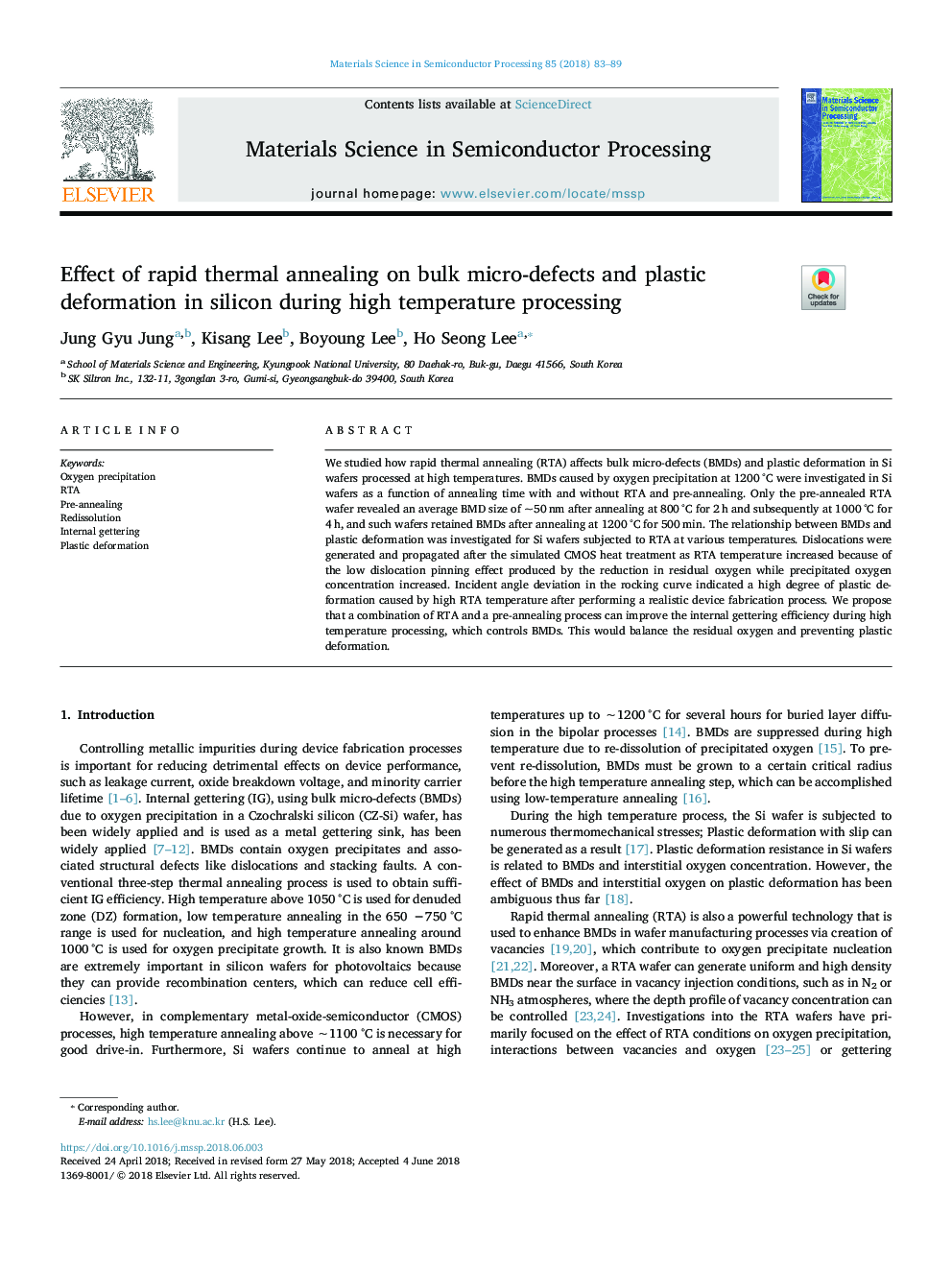| Article ID | Journal | Published Year | Pages | File Type |
|---|---|---|---|---|
| 7117508 | Materials Science in Semiconductor Processing | 2018 | 7 Pages |
Abstract
We studied how rapid thermal annealing (RTA) affects bulk micro-defects (BMDs) and plastic deformation in Si wafers processed at high temperatures. BMDs caused by oxygen precipitation at 1200â¯Â°C were investigated in Si wafers as a function of annealing time with and without RTA and pre-annealing. Only the pre-annealed RTA wafer revealed an average BMD size of ~50â¯nm after annealing at 800â¯Â°C for 2â¯h and subsequently at 1000â¯Â°C for 4â¯h, and such wafers retained BMDs after annealing at 1200â¯Â°C for 500â¯min. The relationship between BMDs and plastic deformation was investigated for Si wafers subjected to RTA at various temperatures. Dislocations were generated and propagated after the simulated CMOS heat treatment as RTA temperature increased because of the low dislocation pinning effect produced by the reduction in residual oxygen while precipitated oxygen concentration increased. Incident angle deviation in the rocking curve indicated a high degree of plastic deformation caused by high RTA temperature after performing a realistic device fabrication process. We propose that a combination of RTA and a pre-annealing process can improve the internal gettering efficiency during high temperature processing, which controls BMDs. This would balance the residual oxygen and preventing plastic deformation.
Related Topics
Physical Sciences and Engineering
Engineering
Electrical and Electronic Engineering
Authors
Jung Gyu Jung, Kisang Lee, Boyoung Lee, Ho Seong Lee,
